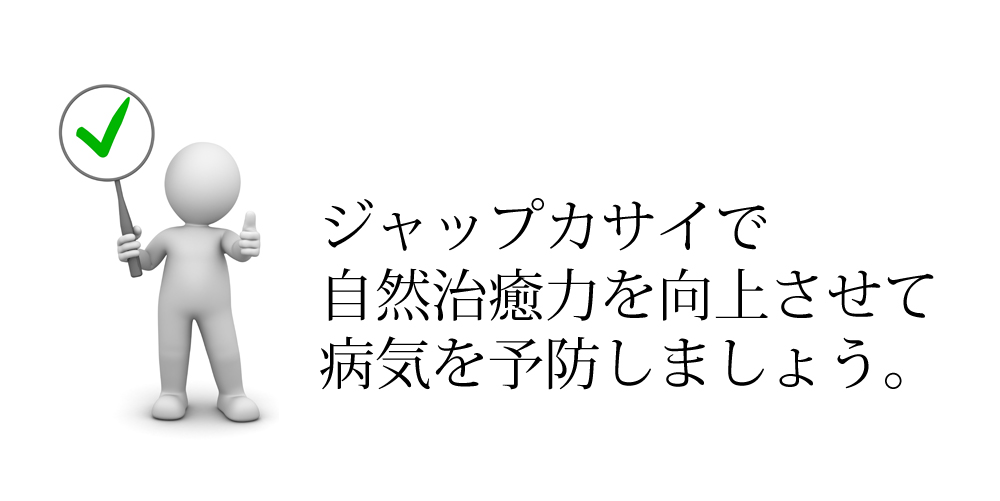|
|
| DISEASE |
|
| |
| DISEASE |
| Diseases of the testicles and urinary system |
| |
| |
| |
 |
| |
 |
| |
 |
| |
| Japkasai helps prevent urological disorders. It is a urological disease that is difficult to understand and cure, but you can lead a meaningful life by improving your physical condition, improving your natural healing power, and keeping a healthy body. .. Japkasai is a traditional medicine procedure. There are no side effects, so we recommend that you take it to prevent illness. Japkasai is a rare treatment method, but recently it has become a hot topic in some areas. I've heard cases where people don't have knowledge of traditional medicine, but if customers come, they will give up a sign. Please be careful about the Moguri business so that you should not be in good physical condition but it has caused you to feel unwell. |
|
| |
 |
| |
 |
| |
| Common illnesses / symptoms in men |
| Organs specific to men include the prostate, testes, epididymis, and penis. There are also diseases associated with these organs. Prostate disease, in particular, is the most common cause of dysuria. The prostate gland is an organ found only in men and secretes prostatic fluid, which is part of the semen. It is located under the bladder and surrounds the urethra and vas deferens, and is about the size of a walnut or chestnut. Prostatic fluid protects and nourishes sperm and supports motor function. The prostate tends to grow with age, and benign prostatic hyperplasia in men is a common disease. When the prostate enlarges, the urethra in the center of the prostate is compressed, causing urinary problems such as frequent urination and weakened urine. Regardless of age, you may feel dull pain or discomfort in the lower abdomen, urethra, penis, testicles, around the anus, etc., and you may also feel frequent urination, urination pain, or residual urine. There are no strong symptoms, but it takes time to improve. Urinalysis does not show any abnormalities, so doctors often say "no abnormalities" when you go to the urology department. |
|
| |
| ◆Benign prostatic hyperplasia |
| Because the prostate gland tends to enlarge with age, one in three men over the age of 60 is said to have benign prostatic hyperplasia. Symptoms such as getting closer to the toilet, weakening urine, or getting up in the toilet during the night may hide benign prostatic hyperplasia or bladder disease. If you leave it as it is because of your age, your symptoms may worsen and it may have a big impact on your daily life. |
|
| |
| ◆Prostate cancer |
| Prostate cancer in men has the highest incidence of cancer in the United States. It is also on the rise in Japan. Onset by age is rare under the age of 45, but the frequency increases after the age of 50, reaching about 200 per 100,000 in the 70s and more than 300 in the age of 80 and over. The cause of prostate cancer is thought to be a genetic abnormality, but it is also said that aging and male hormones have an effect. The exact mechanism is unknown. There are no symptoms specific to prostate cancer, and when the cancer grows and the urethra is compressed, the same symptoms as benign prostatic hyperplasia appear. A basic procedure is a radical prostatectomy, but you will never get an erection again. Your doctor will ask you, "Which do you want to take, life or erection?" |
|
| |
| ◆Acute prostatitis |
| It causes high fever over 38 ℃, pain when urinating, difficulty in urinating, frequent urination, etc. Strong symptoms often occur rapidly, and when they worsen, they may cause chills, muscle aches, arthralgias, and urinary retention that prevents urination. |
|
| |
| ◆Chronic prostatitis |
| Benign prostatic hyperplasia is a disease in which the urethra and bladder are compressed due to the enlargement of the prostate with aging, resulting in various urinary disorders. The pressure may gradually increase and lose momentum, it may take some time to finish urinating, or urination may be interrupted. It also affects the bladder, causing sudden urgency to urinate and leaking, or increasing the frequency of urination. In addition, urine cannot be completely discharged, and urine may remain in the bladder even if you intend to urinate yourself. If you have a lot of residual urine, your kidneys may be adversely affected. For the treatment of benign prostatic hyperplasia, if the symptoms are mild, drug therapy is given first. The effect of the medicine is higher when the symptoms are milder, but if it gets worse if left untreated, surgery is often required. |
|
| |
| ◆Testicular cancer |
| The testicles swell and become stiff, but they are characterized by no pain. If it gets too big, it may be pulled and cause dull pain. If the tumor in the testicle is malignant, it is diagnosed as testicular cancer, but the incidence of malignant and benign cancer is 9: 1, which is the majority. It often occurs in the younger generation in their 20s and 30s, but it also has a peak in their 60s. Of all cancers, testicular cancer is the most common cancer, especially in men in their 20s who are usually less likely to develop cancer. Testicular cancer is a cancer that progresses quickly and easily metastasizes. Therefore, early detection and early treatment are important. The cancer that forms in the testicles spreads to the lymph vessels that connect to the testicles and progresses above the testicles. |
|
| |
| ◆Epididymitis |
| The epididymis is the slightly bulging part next to the testicles. Also called the "epididymis," it is the path of sperm made in the testes. Epididymitis is a condition in which bacteria and viruses enter the epididymis and cause inflammation. Many people go to the hospital saying that their testicles are swollen and painful, but most of them are inflammation of the epididymis near the testicles. Epididymitis causes swelling and pain in the epididymis. Sometimes there is fever. Inflammation on both sides can also cause male infertility due to impaired sperm passage. You will need to take antibiotics as soon as possible. |
|
| |
| ◆Scrotal edema |
| It is a disease in which water accumulates in the scrotum. It seems that the person himself usually notices that it swells greatly or the size of the left and right is different. It is painless and most occur on one side only. Scrotal edema is caused by the accumulation of lymph in the serosa inside the scrotum. Treatment of scrotal edema involves aspiration and serosal resection in adults. |
|
| |
| ◆Varicocele |
| A bundle of blood vessels called spermatic cord is attached to the testicles (testicles). The spermatic cord is connected to a large blood vessel in the upper part of the body, and the testicles hang under the spermatic cord. The blood in the veins that flows from bottom to top, but if for some reason it flows back and flows from top to bottom, old blood will stasis in the veins in the scrotum. This is a varicocele. Symptoms include swelling and dull pain. It happens almost to the left. You won't notice swelling when you're sleeping, but you'll notice it when you stand and work hard. To the touch, it feels like a rugged bellows. I can understand it myself. Treatment will be surgery. |
|
| |
| ◆Hematospermia |
| It is a disease in which blood is mixed with semen. It turns pink when mixed with fresh blood and brown when mixed with old blood. There are no symptoms such as ejaculation pain. I often notice it by chance. The cause occurs when the prostate or seminal vesicles are inflamed. It may have a tumor or may involve allergies. Bacteria and tuberculosis bacteria in semen should be tested at the hospital. CT and MRI examinations are common. |
|
| |
| ◆Male menopausal disorder |
Menopausal symptoms vary from person to person, and some people have symptoms that are almost unnoticeable even after menopause, while others are not satisfied with their daily lives. Menopausal symptoms are common to men and women, while there are menopausal symptoms. Menopause is due to a decrease in the male hormone (testosterone).
Psychological symptoms: annoyed. Get nervous. Become anxious. Become depressed.
Physical Symptoms: I'm sick. My joints and muscles hurt. Sweating is terrible. can not sleep. Loss of muscle strength.
Sexual function symptoms: Decline in sexual function. Decrease in early morning erections. Decreased libido. |
|
| |
 |
| |
| Common illnesses and symptoms of women |
| Common diseases in women include acute cystitis, pyelonephritis, overactive bladder, stress urinary incontinence, interstitial cystitis, and urethral carnkel. For men, it is Japkasai, but for women, there is a treatment called Yoktone. |
|
| |
| ◆Acute cystitis |
| There are many women in their 20s and 30s, and it is said that it takes 3 to 5% of adult women. Seasonally, it occurs more often in winter. Bacteria that have invaded from the urethra increase in the bladder, and the bacteria attach to the lumen and cause inflammation. Most of the causative bacteria are Escherichia coli, which is present in stool, and other bacteria such as staphylococci and serratia. It is said that women are more susceptible to cystitis than men because the urethra is as short and thick as 4 to 5 cm and the urethral meatus is close to the anus. Incentives include long-term restroom fatigue, sexual activity, fatigue, and stress. By putting up with the toilet for a long time, bacteria are likely to increase in the bladder. Occasionally, you may have hematuria. Oral antibiotics are required. Generally, two-thirds of the causes are Escherichia coli, and the next most common is enterococci. |
|
| |
| ◆Pyelonephritis |
| If cystitis is left untreated or if treatment is taking a long time, bacteria will travel backwards to the ureters and kidneys, which are the ureters above the bladder. When it reaches the kidneys, it causes pyelonephritis, which causes fever from evening to night, accompanied by low back pain and back pain. The infection route is often from the preceding cystitis. Antibiotic treatment is required. |
|
| |
| ◆Overactive bladder |
It is estimated that there are about 8.1 million patients with overactive bladder in Japan. The frequency increases with aging, and it is thought that more than 30% of people over the age of 70 have this disease. As the symptoms progress, it becomes harder to consciously control urination and more likely to have an urgent urge to urinate, making it difficult to put up with going to the bathroom. Bladder cancer may also cause overactive bladder-like symptoms. The specific symptoms are as follows.
・ Suddenly, there is a sense of urgency that urine may leak if nothing is done.
・ Frequent urination that goes to the bathroom more than 8 times a day
・ Urge incontinence that sometimes causes urine to leak in time |
|
| |
| ◆Uterine fibroid |
| A benign tumor (a lump like a hump) that forms in the uterus is called a uterine fibroid. It is said that one in five women with menstruation develops uterine fibroids. The cause is not clear, but the effects of female hormones cause fibroids to grow and shrink after menopause. Most are asymptomatic, but symptoms can lead to longer menstrual periods, more menstrual bleeding, frequent genital bleeding, and severe menstrual pain. As the uterine fibroid grows larger, it causes symptoms of pressure on the surrounding area. Bladder compression is typical, and the pee is closer. When it gets bigger, it causes abnormal bowel movements (constipation), and the lower abdomen protrudes or becomes hard to the touch. This can also cause infertility. |
|
| |
| ◆Dysmenorrhea |
| Severe menstrual pain that interferes with daily life. Dysmenorrhea is experienced by many women, but it is diagnosed as dysmenorrhea when it is painful, such as falling asleep every month due to severe pain. There are two types, "organic dysmenorrhea" in which diseases such as uterine fibroids and endometriosis are hidden in the background, and "functional dysmenorrhea" in which no particular causative disease is found. |
|
| |
| ◆Cervical cancer |
| It is a cancer that forms in the cervix near the entrance of the uterus. Infection with human papillomavirus (HPV) due to sex is considered to be the leading cause. Recently, it is increasing among young women. Initially, there are few subjective symptoms, but bleeding may occur after sex. As it progresses, symptoms such as abnormal bleeding, increased vaginal discharge, blood in the vaginal discharge, and vaginal discharge with a foul odor appear. As the cancer progresses further and becomes more widespread, lower abdominal pain, lower back pain, urination pain, diarrhea, bloody stools, and hematuria appear. |
|
| |
| ◆Endometriosis |
| Endometriosis is a disease in which the endometrial tissue, which should originally exist only inside the uterus, repeatedly proliferates and detaches in places other than the uterus (ovary, peritoneum, etc.). Endometriosis grows in accordance with the menstrual cycle due to the influence of female hormones, and blood during menstruation is not drained and is pooled, or it adheres to surrounding tissues and causes various pains. It can also cause infertility. |
|
| |
| ◆Endometrial hyperplasia |
| It is a disease in which the endometrium that covers the inside of the uterus becomes abnormally thick. The endometrium functions as a bed for the fertilized egg to implant during pregnancy, but endometriosis is a condition in which this bed becomes excessively thick. Normally, the thickened endometrium will come off with each menstruation unless you become pregnant, and new endometrium will grow. If the thickened old endometrium remains in the uterus, it may gradually become malignant and develop into endometrial cancer. |
|
| |
| ◆Endometrial polyps |
| Endometrial polyps are shaped like round mushrooms with stems at the base, where some of the cells in the endometrium proliferate and swell. The size ranges from small ones of 1 cm or less to those of more than 10 cm. Although it is a benign mass, it is known that it interferes with the implantation of fertilized eggs and is likely to cause infertility. |
|
| |
| ◆Ovarian tumor |
| There is one ovary on each side of the uterus, usually about 2 to 3 cm in size. The tumor that develops here is an ovarian tumor. Larger ones can exceed 30 cm. Symptoms of ovarian tumors include abdominal bloating, lower abdominal pain, and frequent urination. It often progresses asymptomatic when it is small, and it is often discovered after ascites has accumulated. Suddenly severe lower abdominal pain occurs when the tumor grows and ruptures or twists in the abdomen. |
|
| |
| ◆Ovarian cancer |
| Symptoms such as abdominal fullness, lumpiness, lower abdominal pain, and urination / defecation disorder appear, but since the symptoms are difficult to appear at the initial stage, they are often advanced at the time of diagnosis. |
|
| |
| |
 |
| |
| |
|
| Copyright (C) All Rights Reserved by TTMA 2019-2029 |
| Presented by HTD Company Limited |











